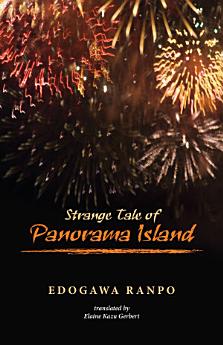Strange Tale of Panorama Island
yan 2013 · University of Hawaii Press
E-book
144
Pages
family_home
Éligible
info
reportLes notes et avis ne sont pas vérifiés. En savoir plus
À propos de cet e-book
Edogawa Ranpo (1894-1965) was a great admirer of Edgar Allan Poe and like Poe drew on his penchant for the grotesque and the bizarre to explore the boundaries of conventional thought. Best known as the founder of the modern Japanese detective novel, Ranpo wrote for a youthful audience, and a taste for playacting and theatre animates his stories. His writing is often associated with the era of ero guro nansense (erotic grotesque nonsense), which accompanied the rise of mass culture and mass media in urban Japan in the 1920s. Characterized by an almost lurid fascination with simulacra and illusion, the era’s sensibility permeates Ranpo's first major work and one of his finest achievements, Strange Tale of Panorama Island (Panoramato kidan), published in 1926.
Ranpo’s panorama island is filled with cleverly designed optical illusions: a staircase rises into the sky; white feathered “birds” speak in women’s voices and offer to serve as vehicles; clusters of naked men and women romp on slopes carpeted with rainbow-colored flowers. His fantastical utopia is filled with entrancing music and strange sweet odors, and nothing is ordinary, predictable, or boring. The novella reflected the new culture of mechanically produced simulated realities (movies, photographs, advertisements, stereoscopic and panoramic images) and focused on themes of the doppelganger and appropriated identities: its main character steals the identity of an acquaintance. The novella’s utopian vision, argues translator Elaine Gerbert, mirrors the expansionist dreams that fed Japan's colonization of the Asian continent, its ending an eerie harbinger of the collapse of those dreams.
Today just as a new generation of technologies is transforming the way we think—and becoming ever more invasive and pervasive—Ranpo's work is attracting a new generation of readers. In the past few decades his writing has inspired films, anime, plays, and manga, and many translations of his stories, essays, and novels have appeared, but to date no English-language translation of Panoramato kidan has been available. This volume, which includes a critical introduction and notes, fills that gap and uncovers for English-language readers an important new dimension of an ever stimulating, provocative talent.
Ranpo’s panorama island is filled with cleverly designed optical illusions: a staircase rises into the sky; white feathered “birds” speak in women’s voices and offer to serve as vehicles; clusters of naked men and women romp on slopes carpeted with rainbow-colored flowers. His fantastical utopia is filled with entrancing music and strange sweet odors, and nothing is ordinary, predictable, or boring. The novella reflected the new culture of mechanically produced simulated realities (movies, photographs, advertisements, stereoscopic and panoramic images) and focused on themes of the doppelganger and appropriated identities: its main character steals the identity of an acquaintance. The novella’s utopian vision, argues translator Elaine Gerbert, mirrors the expansionist dreams that fed Japan's colonization of the Asian continent, its ending an eerie harbinger of the collapse of those dreams.
Today just as a new generation of technologies is transforming the way we think—and becoming ever more invasive and pervasive—Ranpo's work is attracting a new generation of readers. In the past few decades his writing has inspired films, anime, plays, and manga, and many translations of his stories, essays, and novels have appeared, but to date no English-language translation of Panoramato kidan has been available. This volume, which includes a critical introduction and notes, fills that gap and uncovers for English-language readers an important new dimension of an ever stimulating, provocative talent.
Donner une note à cet e-book
Dites-nous ce que vous en pensez.
Informations sur la lecture
Smartphones et tablettes
Installez l'application Google Play Livres pour Android et iPad ou iPhone. Elle se synchronise automatiquement avec votre compte et vous permet de lire des livres en ligne ou hors connexion, où que vous soyez.
Ordinateurs portables et de bureau
Vous pouvez écouter les livres audio achetés sur Google Play à l'aide du navigateur Web de votre ordinateur.
Liseuses et autres appareils
Pour lire sur des appareils e-Ink, comme les liseuses Kobo, vous devez télécharger un fichier et le transférer sur l'appareil en question. Suivez les instructions détaillées du Centre d'aide pour transférer les fichiers sur les liseuses compatibles.








